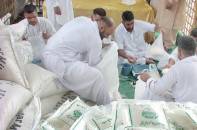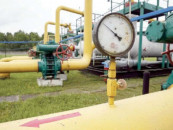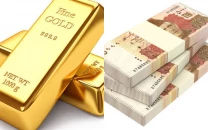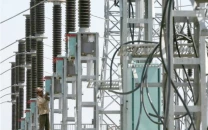Pakistan's economic revival to take time
Focus shifts to emergency health needs and saving lives

Representional image. PHOTO: REUTERS
The current Covid-19 shock can eat up 0.5-1% of gross domestic product (GDP) growth in the current fiscal year, in fact, it can inflict more damage. The repeated cut in policy rate by the central bank since March and its incentive packages can help boost the industry, but will not fully revive the economy.
Moody’s Investors Service has lowered its forecast for Pakistan’s growth and projected a modest contraction of 0.1-0.5% for FY20 because of the growing impact of Covid-19 crisis.
Pakistan has continued to face macroeconomic challenges despite the steps taken earlier to tighten fiscal and monetary policies to rein in high and unsustainable twin deficits – fiscal and current account. In the current year, the government, however, has managed to control the current account deficit.
The entire world has been badly hit by the Covid-19 pandemic. The focus of every nation, including Pakistan, has shifted to emergency health needs and saving lives and economy. The government’s threat of strict action against hoarders of essential commodities has fallen on deaf ears. Lockdown or curfew, both have wider consequences.
In response to the Covid-19 pandemic, the Sindh government quickly jammed the wheels of economy by quick enforcement of the lockdown. Punjab and K-P came later to apply the brakes, but it was direly needed to stop the spread of Covid-19.
Many vulnerable sections of society are still waiting for relief, which is largely absent, when compared with the previous response after a major earthquake or floods. The poor and needy want funds to be quickly disbursed to them. The fear of contracting the virus and social distancing are big constraints.
The government has announced a Rs1.2-trillion relief package but it will take time to reach the masses. The prime minister is striving to distribute resources at a swift pace which may have some impact. However, the larger economy has come to a standstill.
From small to big businesses, poor to middle-class consumers, sports events including the Pakistan Super League (PSL) and other games, the sports industry and all others have been hit badly.
Resources must also be shifted to the health sector that had until the Covid-19 outbreak attracted least attention. Successive reduction in the policy rate by the central bank, though very much desirable, may shift funds to those who may misuse them. Market talk suggests that the money borrowed earlier for the textile sector, went into real estate for a quick return.
Financing may be channelled to the steel industry, which is the backbone of the engineering sector but has been facing a downturn for the past few years.
The auto sector has also been facing headwinds since the massive rupee depreciation. Owing to the rupee’s fall, vehicle prices have been increased sharply in the wake of expensive imported raw material. This has eaten into consumer demand.
New auto production units are about to begin operations. When they come on line, car prices are expected to come down. Enhanced production in the auto sector will also push up the country’s GDP growth. Both the economy of health and the health of economy need quick medicines and vaccines for cure. PM Imran’s recipe may work or not. Let’s see when the dust settles.
The writer is a journalist and media strategist
Published in The Express Tribune, April 27th, 2020.
Like Business on Facebook, follow @TribuneBiz on Twitter to stay informed and join in the conversation.



















COMMENTS
Comments are moderated and generally will be posted if they are on-topic and not abusive.
For more information, please see our Comments FAQ